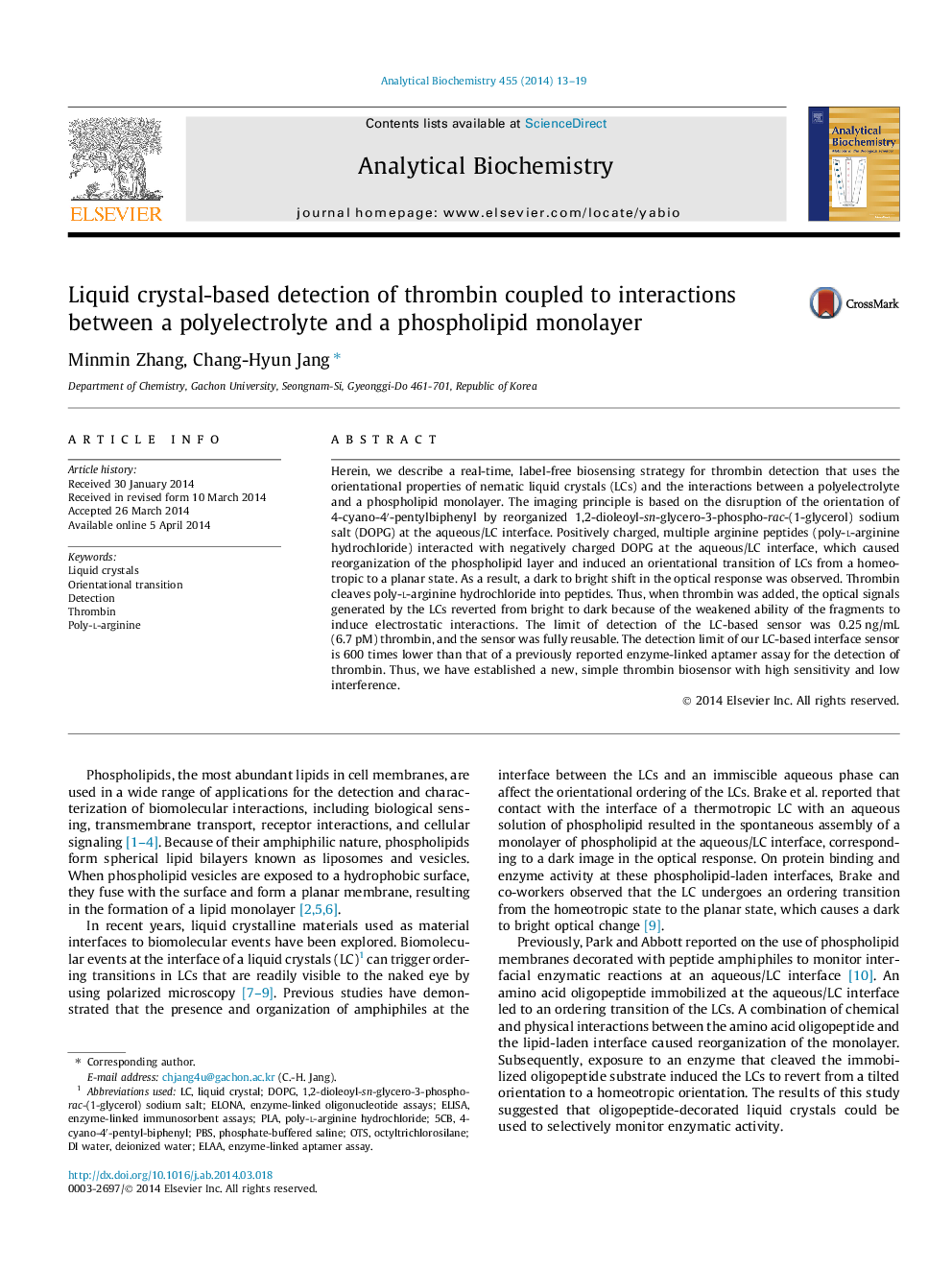| Article ID | Journal | Published Year | Pages | File Type |
|---|---|---|---|---|
| 7559281 | Analytical Biochemistry | 2014 | 7 Pages |
Abstract
Herein, we describe a real-time, label-free biosensing strategy for thrombin detection that uses the orientational properties of nematic liquid crystals (LCs) and the interactions between a polyelectrolyte and a phospholipid monolayer. The imaging principle is based on the disruption of the orientation of 4-cyano-4â²-pentylbiphenyl by reorganized 1,2-dioleoyl-sn-glycero-3-phospho-rac-(1-glycerol) sodium salt (DOPG) at the aqueous/LC interface. Positively charged, multiple arginine peptides (poly-l-arginine hydrochloride) interacted with negatively charged DOPG at the aqueous/LC interface, which caused reorganization of the phospholipid layer and induced an orientational transition of LCs from a homeotropic to a planar state. As a result, a dark to bright shift in the optical response was observed. Thrombin cleaves poly-l-arginine hydrochloride into peptides. Thus, when thrombin was added, the optical signals generated by the LCs reverted from bright to dark because of the weakened ability of the fragments to induce electrostatic interactions. The limit of detection of the LC-based sensor was 0.25Â ng/mL (6.7Â pM) thrombin, and the sensor was fully reusable. The detection limit of our LC-based interface sensor is 600 times lower than that of a previously reported enzyme-linked aptamer assay for the detection of thrombin. Thus, we have established a new, simple thrombin biosensor with high sensitivity and low interference.
Related Topics
Physical Sciences and Engineering
Chemistry
Analytical Chemistry
Authors
Minmin Zhang, Chang-Hyun Jang,
